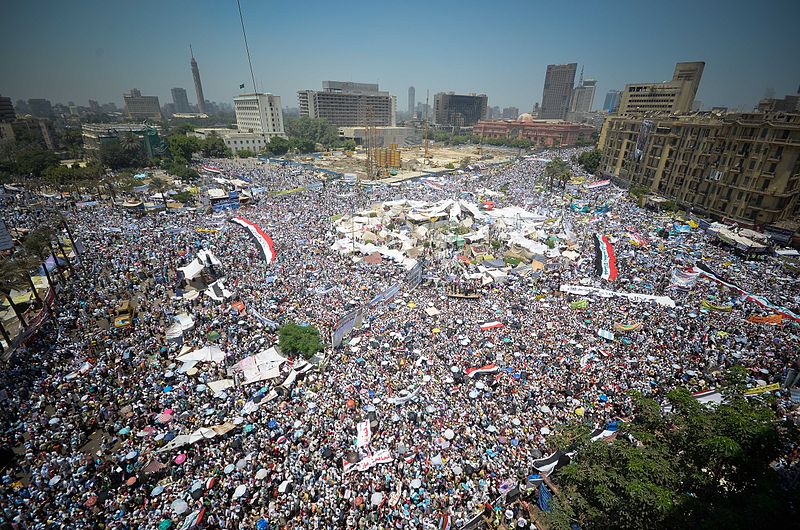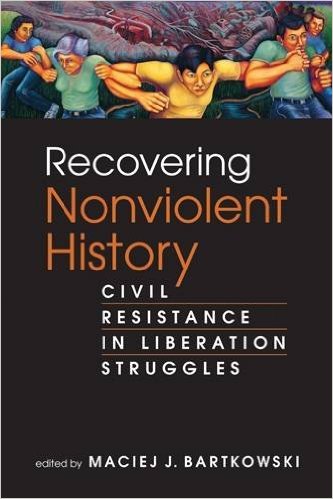During one of the academic seminars on civil resistance my colleague Erica Chenoweth made an important observation that, perhaps excluding East Timor, no civilian-led nonviolent mobilizations that are listed in the comprehensive dataset of Nonviolent and Violent Campaigns and Outcomes experienced genocidal killings. This contrasted sharply with the armed struggles that often fueled counterinsurgency and mass atrocities (e..g in Cambodia in the 1970s, Rwanda in 1994, or in Guatemala at the beginning of the 1980s).
I would like to substantiate that insight with some relevant information.
1) In their study on civilian fatalities in wars Kristine Eck and Lisa Hultman observed that “… the vast majority of attacks on civilians do take place in countries plagued by armed conflict; we found that less than 1% of the total fatalities took place in [conflict] countries which did not see armed conflict during the period [1989-2004].” In other words, the conflict countries that experienced civil war (or counterinsurgency violence) between 1989-2004 accounted for more than 99% of the civilian fatalities (out of 573,000) while conflict countries with “one-sided violence” (where violent government attacked unarmed civilians and peaceful movements) accounted for less than 1% of the civilian casualties during the same period. The countries with “one-sided violence” that were included in the dataset were: Armenia (1992), Cameroon (1994), China (1989 – Tiananmen), Honduras (2004), Morocco (2003), Nigeria (2002–03), Saudi Arabia (2004), South Africa (1990-nonviolent anti-apartheid struggle; 1992–95), Tanzania (2001) and Thailand (1992; 2003–04).
Although not dealing directly with the civilian fatalities during civil resistance struggles the study nevertheless shows that mass killings of civilians in recent times occurred during civil wars and violent insurgencies rather than in nonviolent resistance. This is not to say that atrocities did not take place against people who mobilized peacefully. They did happen but it was more difficult for the government or armed militia, fearing, among others, possible backfire and divisions within their ranks, to conduct scorched earth campaigns when faced with mobilized but unarmed communities.
Inhibitions that are present when the population challenges armed regime using nonviolent methods are put aside once the resisters turn to arms. Faced with armed insurgency the regime becomes less concerned about a possibility of a backfire as a result of its disproportionate use of violence and is, in fact, more willing to engage in indiscriminate killing. The use of lethal force looks also more justifiable to the regime supporters and outsiders once the opposition takes arms. This happened in Syria. The Assad regime consolidated its ranks and rallied its supporters once the opposition became violent. It was also much easier for the regime to use fighter jets and chemical weapons that were not deployed when nonviolent resistance dominated the uprising and became a permissable option when faced with armed resistance.
2) Civil resistance in Syria saved many lives when it lasted while the armed resistance, which was supposed to protect Syrians, has in fact increased the chances of civilians being killings. “In reality, civil resistance, while imposing significant costs on the regime and faced with brutal repression, saved many lives when it lasted, as the following figures illustrate. During the first five months of nonviolent civil resistance (mid-March to mid-August, 2011), the death toll was 2,019 (figures exclude regime army casualties). In the next five months (mid-August 2011 to mid-January 2011) mixed violent and nonviolent resistance saw the death toll climbed to 3,144, a 56% increase. Finally, during the first five months of armed resistance (mid-January 2012 to mid-June 2012) the death toll was already 8,195, a staggering 161% increase in comparison with the casualties during nonviolent struggle.” in Syrian Resistance: Tale of Two Struggles
3) Finally, my colleague Howard Barrell who has an intimate knowledge of the African National Congress (ANC) and its military operations in the 1970s and 1980s told me that ANC own intelligence assessed that a survival rate of an ANC armed insurgent was, on average, between 3 to 7 days. The risks of imprisonment, not to mention the rate of death, among nonviolent anti-apartheid activists were counted in months and years rather than days.
So, do nonviolent resistance movements reduce chances of people being killed or mass atrocities being committed? Evidences, still relatively scarce, suggest yes.





Recent Comments